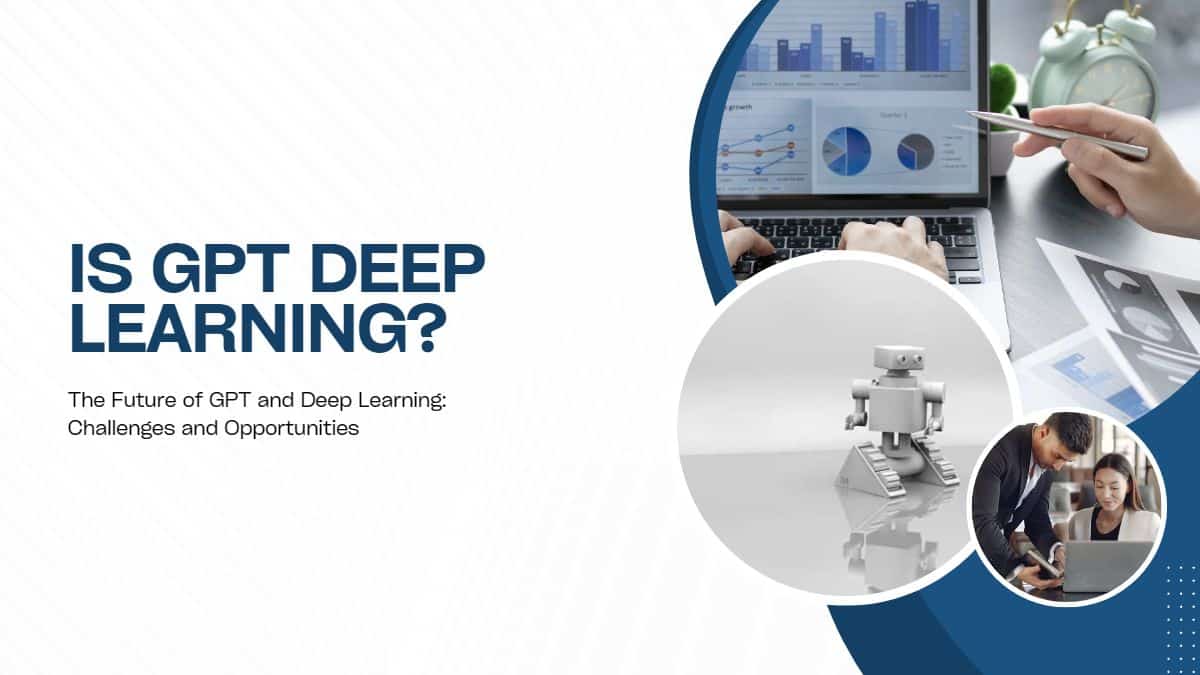Is GPT Deep Learning?

Table of Contents
You’re not alone if you’re curious whether GPT is a form of deep learning. Generative Pre-trained Transformer (GPT) is a language model that generates humanoid text.
It uses a type of neural network called transformer architecture to do this. But is it deep learning? Let’s talk about it in detail.
Prime Day is finally here! Find all the biggest tech and PC deals below.
- Sapphire 11348-03-20G Pulse AMD Radeon™ RX 9070 XT Was $779 Now $739
- AMD Ryzen 7 7800X3D 8-Core, 16-Thread Desktop Processor Was $449 Now $341
- ASUS RTX™ 5060 OC Edition Graphics Card Was $379 Now $339
- LG 77-Inch Class OLED evo AI 4K C5 Series Smart TV Was $3,696 Now $2,796
- Intel® Core™ i7-14700K New Gaming Desktop Was $320.99 Now $274
- Lexar 2TB NM1090 w/HeatSink SSD PCIe Gen5x4 NVMe M.2 Was $281.97 Now $214.98
- Apple Watch Series 10 GPS + Cellular 42mm case Smartwatch Was $499.99 Now $379.99
- ASUS ROG Strix G16 (2025) 16" FHD, RTX 5060 gaming laptop Was $1,499.99 Now $1,274.99
- Apple iPad mini (A17 Pro): Apple Intelligence Was $499.99 Now $379.99
*Prices and savings subject to change. Click through to get the current prices.
Understanding Deep Learning
Before we dive into whether GPT is deep learning, let’s first understand what deep learning is. It is a subset of machine learning.
It uses neural networks with many layers to learn and make predictions. Neural networks are computer systems modeled after the structure of the human brain. They are useful in deep learning to process and analyze data.
How GPT Uses Deep Learning
GPT uses deep learning to analyze and learn patterns in vast amounts of text data. It then generates new text according to what it has learned.
The neural network in GPT has many layers, making it a form of deep learning. This allows GPT to analyze complex patterns in language and generate humanoid responses.
The Transformer Architecture
We need to look at its transformer architecture to understand better how GPT uses deep learning. The transformer architecture is a neural network that processes sequential data like text.
It was first introduced in 2017 by researchers at Google. Transformer architecture uses self-attention mechanisms to allow the network to focus on different parts of the input data. This makes it more efficient at analyzing large amounts of data, vital for GPT’s ability to generate human-like text.
What Makes GPT Unique from Other Language Models?
GPT generates text by predicting the next word in a sentence based on the previous words. It uses a technique called “transformer architecture” to do this.
GPT is trained using a process called “unsupervised learning.” This means it learns from vast amounts of data without explicit instruction.
GPT is different from other language models because of its use of transformer architecture and its ability to generate long, coherent text.
GPT’s Applications
GPT has many applications, including text generation, language translation, and chatbots. It’s also helpful in industries such as finance and healthcare for data analysis.
GPT’s ability to analyze and generate human-like text has many potential uses in the future. For example, it could improve customer service in call centers or generate more responses in virtual assistants.
Limitations of GPT
While GPT has many potential uses, it also has limitations. One of the most significant limitations is its tendency to generate biased or nonsensical text.
OpenAI has trained GPT on existing text data containing biases or errors. GPT is also limited by the quality and quantity of the data because of this training. If the data is biased or incomplete, it will affect the accuracy of GPT’s responses.
Conclusion
GPT is a form of deep learning. It uses a neural network with many layers to analyze and learn patterns in text data. Its transformer architecture allows it to analyze large amounts of data and generate humanoid text efficiently.
While it has many potential uses, it also has limitations that users must consider. GPT and other natural language processing systems will become even more powerful and useful as technology advances.

